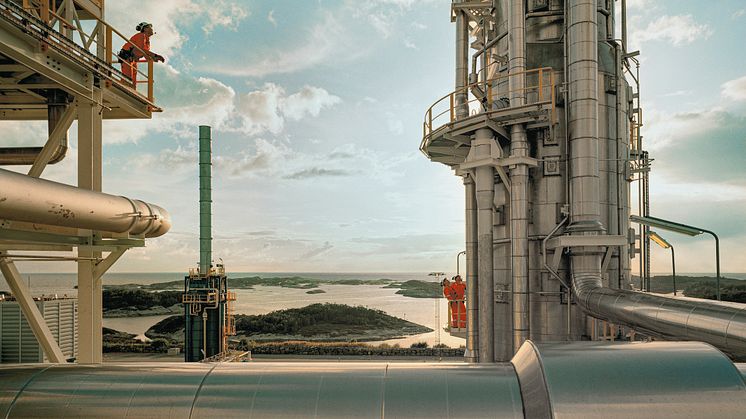
News -
Höegh Evi, Wärtsilä and Partners Successfully Complete Development of the World’s First Floating Ammonia-to-Hydrogen Cracker
Höegh Evi, a global leader in marine energy infrastructure, and Wärtsilä Gas Solutions, part of technology group Wärtsilä, have successfully completed development of the world's first floating ammonia-to-hydrogen cracker. This breakthrough technology enables floating import terminals to produce hydrogen at industrial-scale volumes from transported ammonia, marking a major step in the energy transition. The project was announced in April 2023 and is part of Norway's green platform programme.
Scalable Technology for a Secure Energy Transition
The industrial-scale ammonia cracker has a modular design that allows integration into both hybrid Floating Storage and Regasification Units (FSRUs) and dedicated Floating Hydrogen Terminals. The technology is highly scalable with a sendout capacity of up to 210,000 tonnes of hydrogen annually. Ammonia storage can range from 10,000m³ to 120,000m³.
"The floating ammonia-to-hydrogen cracker developed by Höegh Evi, Wärtsilä and partners is a game-changer for the hydrogen economy and the energy transition in Europe. Our floating terminals and cracking technology can unlock the full potential of global value chains for green hydrogen, providing European industry with a reliable supply of clean energy within this decade," said Erik Nyheim, CEO of Höegh Evi.
Building on Norway's history as marine energy pioneers
The project has received approximately EUR 5.9 million in funding from the Norwegian Government's green platform programme, representing approximately 50% of the total budget. The ammonia cracker was constructed at Sustainable Energy's Norwegian Catapult Center in Stord. Additional partners in the project include the Institute for Energy Technology (IFE), University of South-East Norway, Sustainable Energy and BASF SE.
Meeting Europe's 2030 hydrogen import targets
According to the EU's REPower strategy, Europe plans to import 10 million tonnes of renewable hydrogen per year by 2030. As the development of the hydrogen grid progresses, floating infrastructure with ammonia cracking technology can unlock large-scale imports, supplying hard- to-abate industries with a stable baseload energy source and balance within the energy system. To meet this demand, Höegh Evi is developing several hydrogen terminal projects in Europe, with targeted start of operations before 2030.

